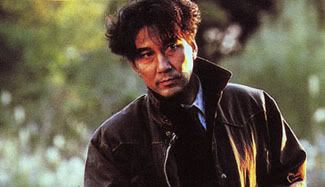
Charisma is easily described as "bizarre", and I believe it warrants such a claim more than many other films which are described as such. The storyline follows an ex-cop named Yakuibe (which translates as "grove" and "pond", and is played by Yakusho Koji) as he seeks redemption, or understanding, for why he seemingly caused the death of a hostage earlier in the film. Most of the plot is difficult, and maybe pointless, to describe but a good deal of it encircles a mysterious tree, named Charisma, which is guarded by a lunatic. Around it, is a forest that's being poisoned by either a deranged botanist or said mysterious tree. There's also a brigade of mercenaries attempting to steal Charisma. The botanist's sister is an out of place (within the film and the cast) and disenchanted young girl, who seems to be the only sexually charged being around. Charisma seems sophomorically thrown together, and even the director admits in an interview that he's not sure it all "works".
As odd as this all sounds, what really attracts is the visceral experience. The forest is framed in such a way that it seems endless. Earth and trees have never seemed so creepy in broad daylight, and, as one of the characters in the film remarks, it's a dangerous place. Shots of trees slowly dying, or humans eating mushrooms and slithering away in agony remain. The soundtrack is airtight, and never intrudes. The scenes are edited at a glacial pace, and you feel as alone and seperate from the world as the characters seem to. The plot of Charisma, and the environmental, psychological, or philosophical ideas that it attempts to dip into, are not the main attraction. That being said, they do intrude, and I've liked some of Kurosawa's other films a bit more (particularly Cure.)



